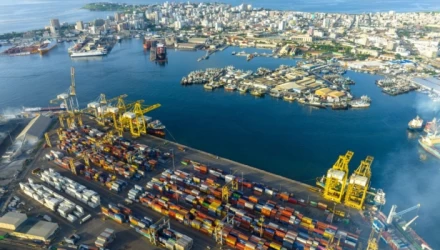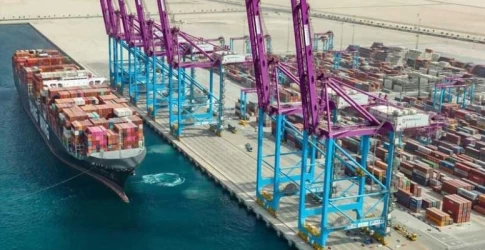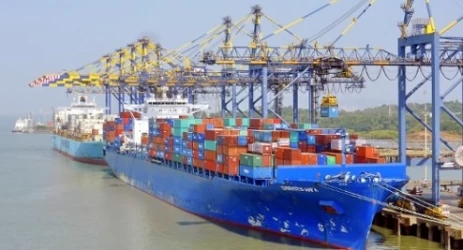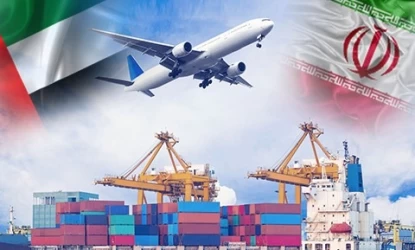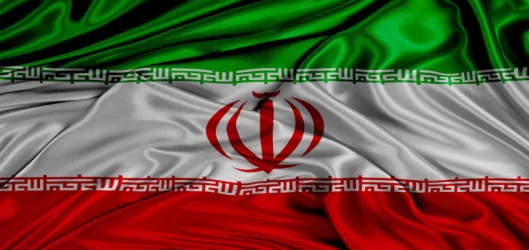Sea freight in Calcutta port
Kolkata Port, located on the eastern coast of India, is one of the oldest and most significant ports in the country. Situated along the Hooghly River, it serves as a crucial gateway for maritime trade, facilitating the flow of goods and commodities both domestically and internationally. This article explores the role of Kolkata Port in maritime transportation, its infrastructure, types of cargo handled, economic impact, challenges, and opportunities for growth.
Importance of Kolkata Port in Maritime Transportation
Kolkata Port plays a pivotal role in the maritime transportation network of India. It is the primary port for trade in the eastern region, connecting India to major global markets. The port's strategic location enables it to serve as a key hub for both imports and exports, facilitating trade with Southeast Asia, Europe, and other regions. The port significantly contributes to India's economy by facilitating the movement of goods, thereby boosting various industries and creating employment opportunities.
Infrastructure and Facilities at Kolkata Port
Kolkata Port boasts a range of modern facilities that enable it to handle diverse cargo types efficiently. Key infrastructure includes:
- Container Terminals: The port has multiple container terminals equipped with advanced cranes and handling equipment, ensuring the smooth movement of containerized cargo.
- Bulk Cargo Facilities: Kolkata Port is well-equipped to handle bulk cargo such as agricultural products, coal, iron ore, and other minerals, which are critical for the industrial sector.
- Warehousing and Storage Facilities: The port provides short-term and long-term storage options for various goods, including perishables and temperature-sensitive items.
- Customs and Logistics Services: Efficient customs clearance and logistics services at the port minimize delays in cargo movement, enhancing trade efficiency.
Types of Cargo Handled
Kolkata Port handles a wide variety of cargo, including:
- Containerized Cargo: A significant portion of the port's throughput consists of containerized goods, including electronics, textiles, and food products.
- Bulk Cargo: The port manages large volumes of bulk commodities such as grains, fertilizers, and minerals, vital for both domestic use and export.
- General Cargo: Kolkata Port facilitates the movement of general cargo, including machinery and manufactured goods, supporting various industrial sectors.
- Liquid and Chemical Cargo: The port has specialized facilities for handling liquid and chemical cargo, catering to the petrochemical and pharmaceutical industries.
Economic Impact of Kolkata Port
Kolkata Port is a vital contributor to the regional and national economy. It enhances trade connectivity, leading to increased economic activities in the region. The port creates numerous job opportunities, directly and indirectly, across various sectors such as shipping, logistics, and trade. Furthermore, the development of port-related infrastructure has a ripple effect, boosting local businesses and industries.
The port's role in facilitating trade helps stabilize prices of essential commodities and supports the agricultural sector by providing access to international markets. Additionally, Kolkata Port enhances India's global trade competitiveness, attracting foreign investment and promoting economic growth.
Challenges and Opportunities
Despite its significance, Kolkata Port faces several challenges:
- Congestion and Accessibility Issues: The port often experiences congestion, which can lead to delays in cargo handling and increased transportation costs. Improving access roads and optimizing port operations is essential to mitigate this issue.
- Infrastructure Development Needs: While the port has modern facilities, continuous upgrades are necessary to keep pace with the increasing volume of trade and larger vessels.
- Environmental Concerns: Maritime activities at the port contribute to environmental issues, such as pollution and habitat disruption. Implementing sustainable practices and technologies is crucial for minimizing environmental impacts.
- Competition from Other Ports: The emergence of newer ports in the region poses a competitive threat to Kolkata Port. Strategic investments in infrastructure and services are essential to maintain its position as a leading maritime hub.
Despite these challenges, Kolkata Port has numerous opportunities for growth. Investments in technology and infrastructure can enhance operational efficiency and expand capacity. The increasing focus on international trade, coupled with government initiatives to improve logistics and connectivity, presents favorable prospects for the port's future.
Conclusion
Kolkata Port plays a critical role in India's maritime transportation landscape. Its strategic location, diverse infrastructure, and significant contribution to trade make it a vital economic asset. Addressing the challenges faced by the port through strategic investments and sustainable practices will be essential for its continued growth and development. As Kolkata Port evolves, it has the potential to strengthen its position as a key player in global maritime trade, fostering economic growth and development in the region.
If you have any specific questions or need further assistance, feel free to ask!







